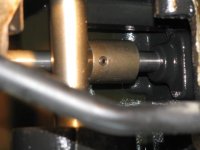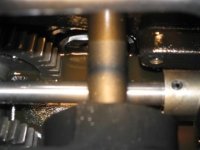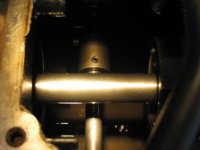Jim_Fisher
Gold Member
- Joined
- Jun 2, 2003
- Messages
- 305
- Location
- SE Pa (Chester County)
- Tractor
- John Deere 4300, John Deere 3010 w/48 loader
reasley said:I went ahead and ordered the parts to do the repair -- should be in Wednesday (parts below if interested):
YZ80993 BELL CRANK, RANGE 26.50 F37020111 O-RING 0.85 USD 2.55 USD YZ80859 SHAFT 32.25 YZ80858 LEVER, INT.30.75 F7125020HBK PIN,SPIRAL 1.25 USD 7.50 F21008SC PLUG, EXPANSION 1.65 USD 4.95 USD LVU11633 KNOB, CAP RANGE 9.50 M134678 BASE, SHIFT KNOB 2.65 24M7040 WASHER, METALLIC, ROUND HOLE 0.24 19M7774 SCREW, FLANGED, METRIC 0.41 11M7012 PIN, COTTER 0.15 USD
I ordered the shift shaft to either use as a replacement or as a model for my machine shop.
Hopefully, the procedure will go well and only the rockshaft cover will need to be removed.
Interesting finding while on the phone with the parts person: there has been an improvement to the shift forks for this series of tractors. I am assuming for smoother, safer, less-wearing, more durable shifting of the 3 ranges. I did not order the kit (assuming that the rockshaft cover will take care of my repair), but if I do end up splitting the tractor, I will certainly get that kit . . .
Richard Easley
Richard,
If you end up removing the rockshaft cover, you should probably make sure that you have a hydraulic filter and sufficient fluid on hand to for a complete change as well as a gasket for the housing that holds the suction screen.
Also make sure that you have a good magnet in case you can't catch the roll pin that holds the internal shift lever in place.
While you are under the tractor, make sure that the brake shafts are free. I had a brake hang this weekend and ended up having to loosen the adjustments on both sides and apply some kroil to the shafts to get them to work freely. The tractor was delivered with the brake adjustments a little bit on the tight side and after 1800+ hours of use, they have never needed adjustment. I left them a half turn looser on the turnbuckles in the hope that the extra travel will prevent them from hanging in the future.


